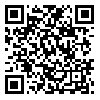BibTeX | RIS | EndNote | Medlars | ProCite | Reference Manager | RefWorks
Send citation to:
URL: http://ijeee.iust.ac.ir/article-1-741-en.html
This paper presents a new method for evaluation and simulation of inrush current in various transformers using operational matrices and Hartley transform. Unlike most of the previous works, time and frequency domain calculations are conducted simultaneously. Mathematical equations are first represented to compute the inrush current based on reiteration and then Hartley transform is used to study harmonic effects in the frequency domain. Being a real valued function and accordingly giving results with the higher speed of calculations are the main features of Hartley transform. The inrush problem is initially solved for single-phase transformers for switching at different angles of the voltage waveform using this method and then the results of harmonic domain are compared with that of Fourier transform. The methodology is also applied to three-phase three-limb transformers since the analysis of their transient behavior is significant owing to the flux coupling interactions in multi-leg core structures. The feasibility and efficacy of the method is illustrated with appropriate circuits and MATLAB code is developed to get the time and frequency domain waveforms with high accuracy. The results are helpful to identify and evaluate inrush current harmonic effects in various transformers and hence the efficiency of the method is verified.

Received: 2014/12/01 | Revised: 2016/04/24 | Accepted: 2015/06/27
| Rights and permissions | |
 |
This work is licensed under a Creative Commons Attribution-NonCommercial 4.0 International License. |








